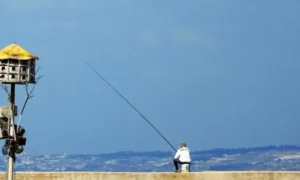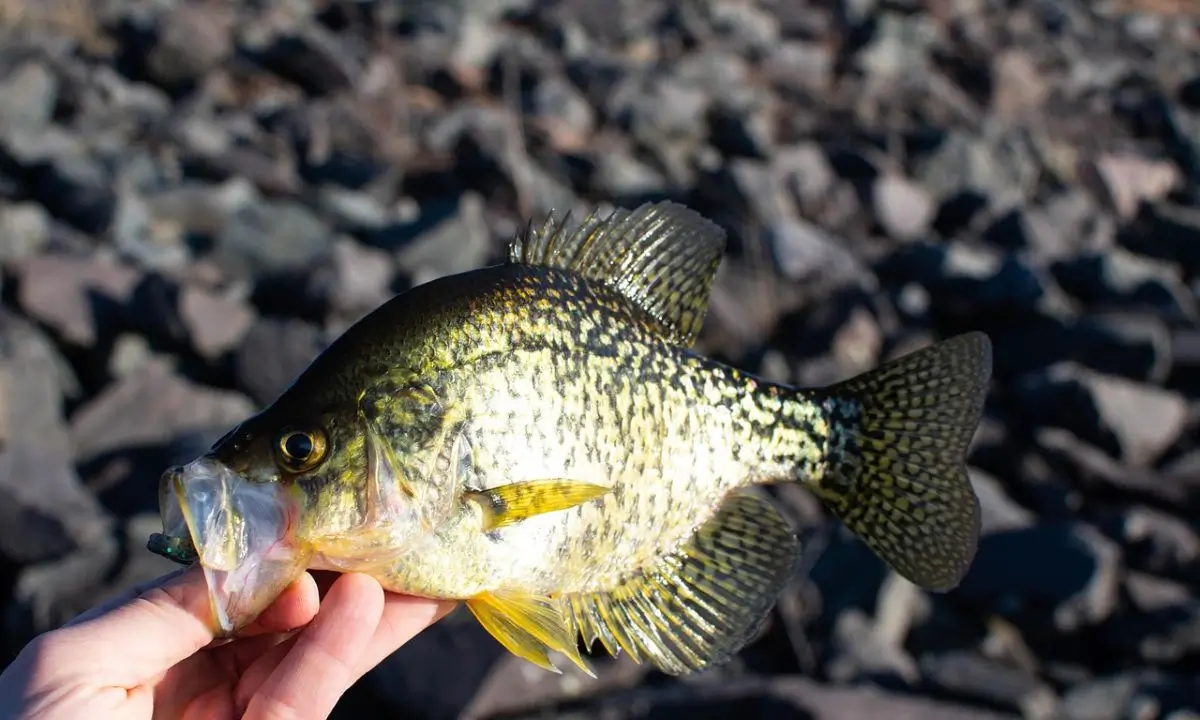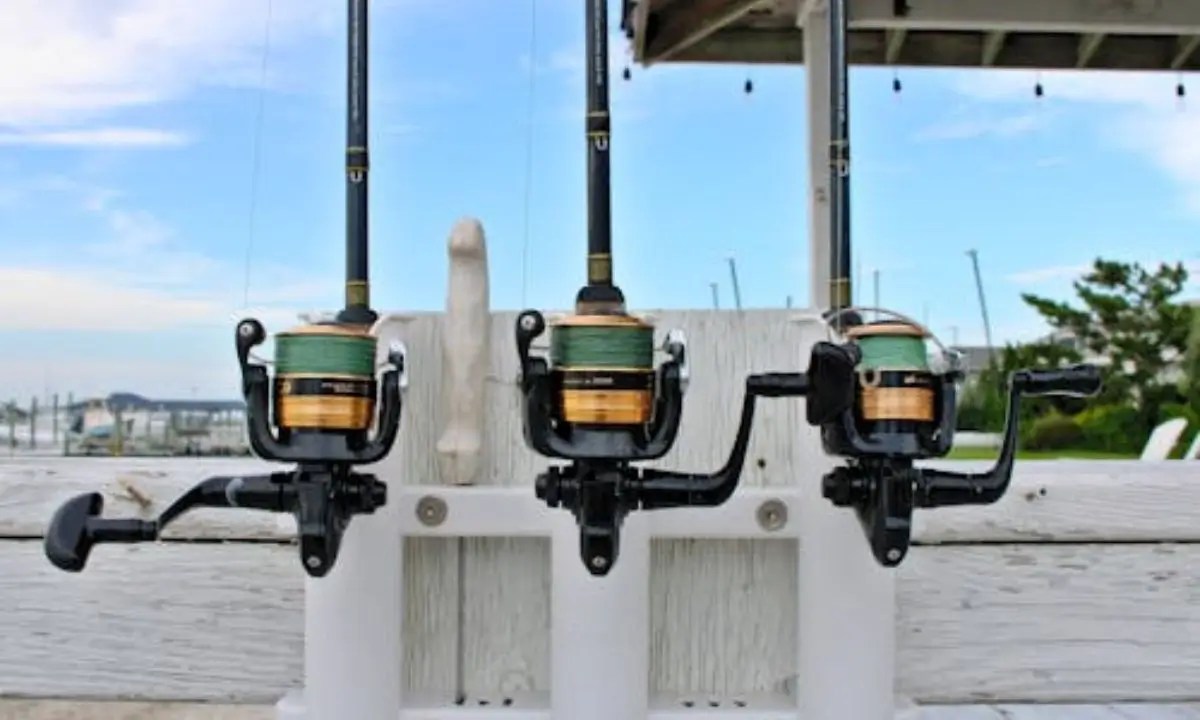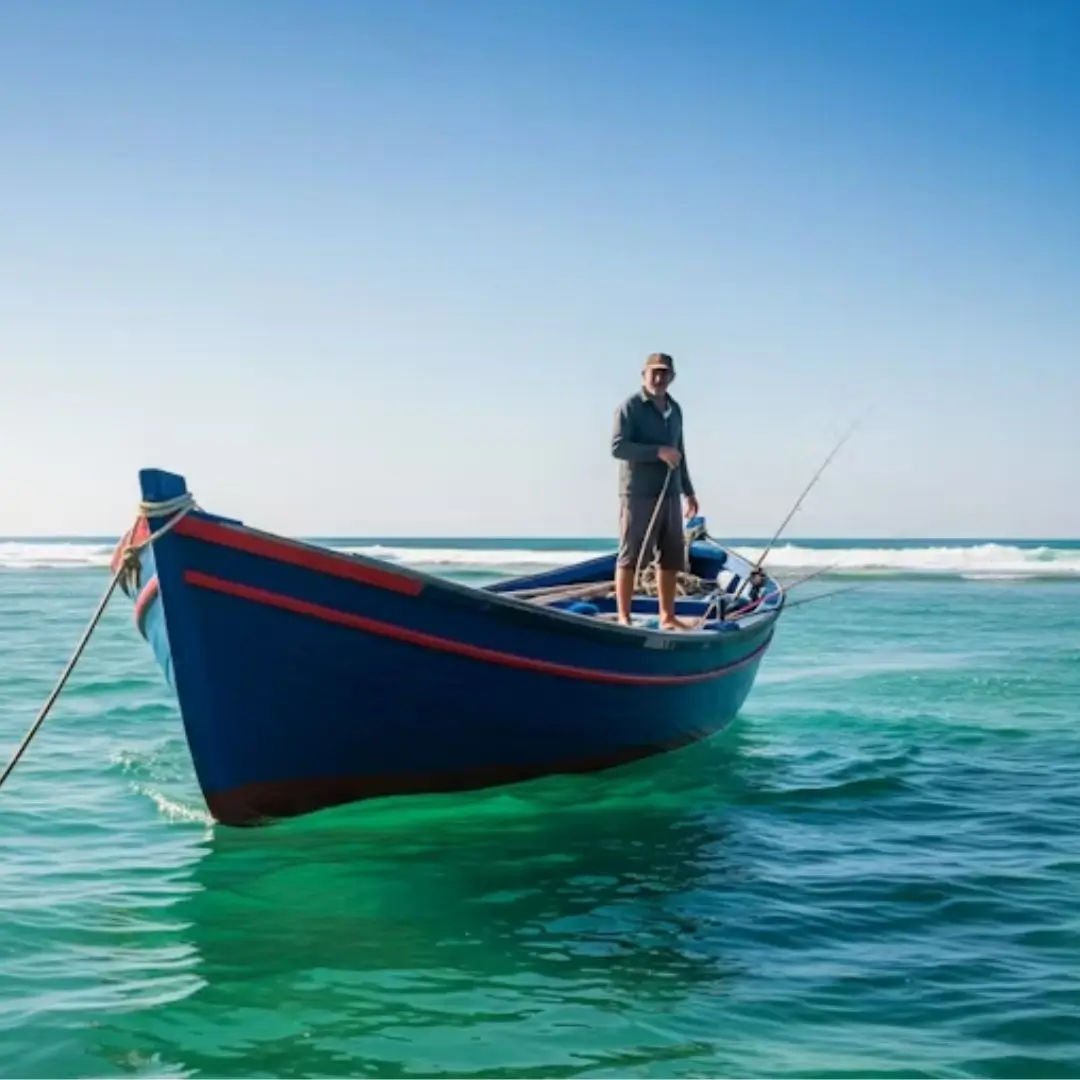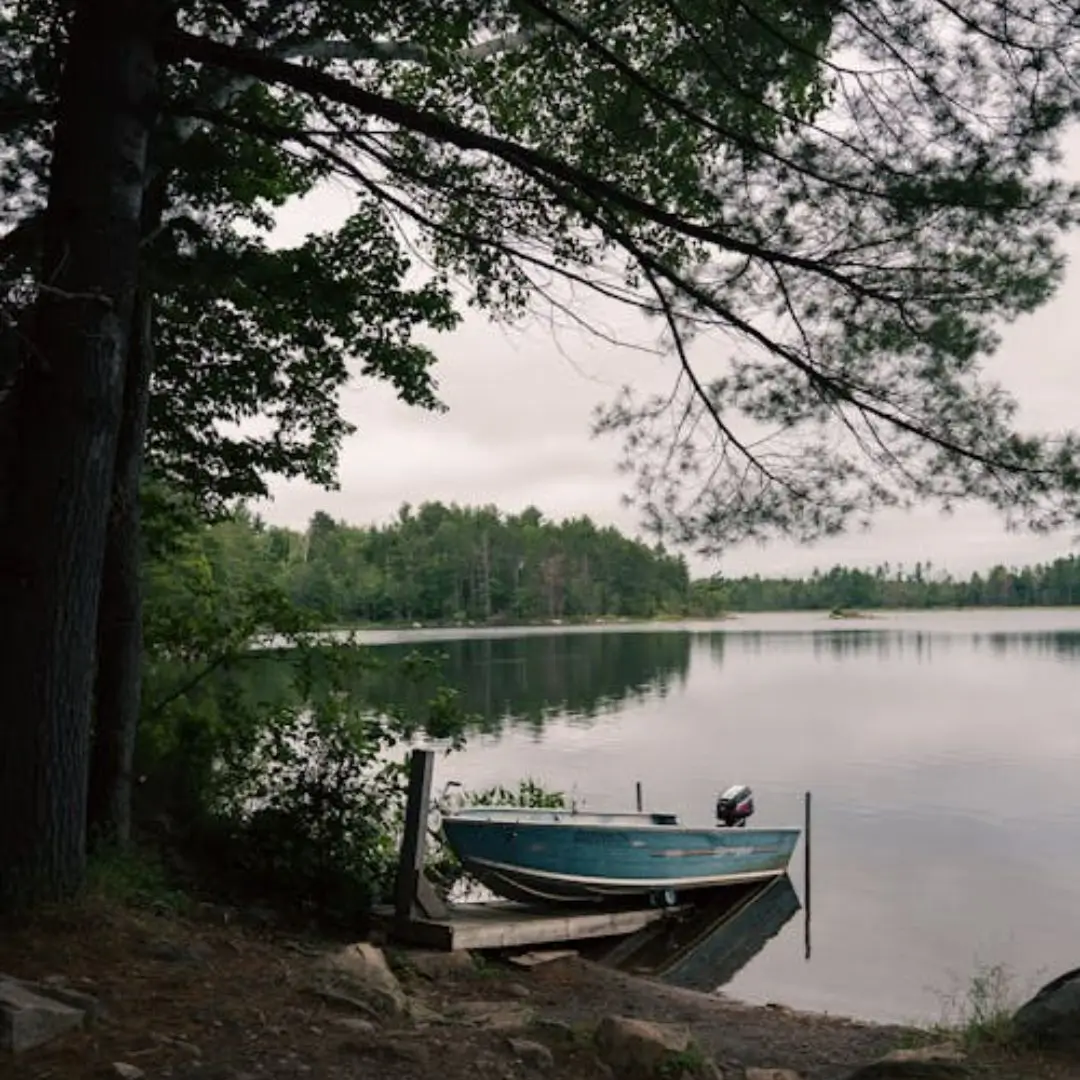Fly fishing for striped bass is an exciting fishing method where anglers use lightweight flies to imitate baitfish. This technique works best in shallow waters, rivers, and coastal areas, giving anglers precision, sport, and a natural presentation to catch stripers effectively.
Introduction:
Fly fishing for striped bass has become one of the most rewarding techniques for anglers in 2025. Unlike traditional spinning or bait fishing, fly fishing uses lightweight artificial flies to mimic natural baitfish, making it highly effective in rivers, estuaries, and coastal waters. Striped bass are known for their aggressive strikes and powerful runs, which makes fly fishing both thrilling and challenging. This guide will walk you through essential tips, gear, seasonal patterns, and techniques to help you succeed.
Whether you are a beginner learning the basics of striped bass fly fishing or an experienced angler looking for advanced tips, you will find valuable insights here. By mastering the right equipment, understanding striper behavior, and applying smart techniques, you can enjoy a more productive and exciting fishing experience. details Fly Fishing Spinning Rod
Can You Fly Fish for Striped Bass?
Absolutely. Fly fishing for striped bass is one of the most exciting challenges for anglers in both saltwater and freshwater. Stripers are strong fighters, and they thrive along the Atlantic coast, Cape Cod, Maine, California, and even brackish rivers. Anglers target them from shore, surf, flats, and boats.
👉 Tip for beginners: Start with calm waters like estuaries or bays before moving to surf fly fishing for striped bass.
Understanding Striped Bass Behavior
To master fly fishing for striped bass, you first need to understand their behavior. Striped bass are migratory fish, often moving between freshwater rivers and saltwater bays depending on the season. In spring and fall, they migrate closer to shore, making them easier to target with fly fishing techniques. These fish feed aggressively on baitfish like herring, shad, and menhaden, so matching your fly to their food source increases your chances of success.
They prefer areas with moving water—such as tidal rips, inlets, and rocky coastlines—where baitfish gather. By studying striped bass behavior and seasonal patterns, anglers can improve their chances of catching more fish consistently. more info Fly Fishing Expo Denver
What to Use to Fish for Striped Bass?
For fly fishing, you’ll need:
-
8–10 weight fly rod with strong backbone.
-
Floating or intermediate fly line depending on depth.
-
Striper flies (Closure Minnow, Half & Half, Deceiver).
-
Leaders in the 20–30 lb test range.
-
Polarized sunglasses to spot fish in shallow water.
🎯 Use saltwater fly fishing setups when targeting them along the coast and lighter setups in freshwater rivers.
Essential Gear for Fly Fishing Striped Bass
For a successful fly fishing for striped bass experience, having the right gear is crucial. Your rod, reel, line, and flies must match the size and behavior of the striped bass you are targeting. Most anglers prefer an 8–10 weight fly rod because it provides enough strength to handle large stripers while still allowing precise casting. Pair it with a smooth drag fly reel that can manage long runs.
Fly lines are equally important. Floating lines work well in shallow waters, while sinking tip lines are ideal for deeper channels and tidal rips. Leaders and tippets should be strong but flexible, allowing natural fly movement.
Selecting the right flies is also key. Popular choices include Crouser Minnows, Deceivers, and small baitfish imitations that match the local forage. Color and size should mimic what stripers are feeding on at the time.
Other essential gear includes polarized sunglasses to spot fish in the water, a quality landing net, and a durable tackle bag for organization. Safety items such as a life jacket and wading staff are important when fishing from shore or shallow rivers.
By preparing the correct gear and understanding how each piece functions in your setup, you increase your chances of a productive striped bass fly fishing trip while staying safe and comfortable.
What Fish Can You Fly Fish For?
Besides stripers, you can target bluefish, redfish, bonefish, trout, largemouth bass, and tarpon. Fly fishing is versatile, but striped bass are unique because they can be caught in both fresh and saltwater habitats.
Best Techniques for Fly Fishing Striped Bass
Fly fishing for striped bass requires not only the right gear but also effective techniques to increase your catch. Casting properly is essential. Short casts are ideal for precise placement near structure, while long casts help cover open water or reach feeding schools of stripers. Using the double haul technique can improve distance and line speed, making it easier to land aggressive fish.
Retrieval is another key factor. Stripers respond differently depending on water temperature and baitfish activity. Slow, steady strips often work in colder water, while fast, erratic retrieves can trigger strikes in warmer months. Matching your stripping rhythm to the natural movement of baitfish increases success.
Reading the water is crucial. Focus on tidal rips, inlets, rocky shorelines, and current breaks where baitfish gather. These areas are prime feeding spots for stripers. Adjust your fly choice and presentation based on these conditions for maximum effectiveness.
Other advanced tips include varying your fly size and color to match local forage, and changing your casting angle to improve visibility and reduce drag. Combining these techniques with proper gear ensures a more productive and enjoyable striped bass fly fishing experience. details explain Fishing Pontoon Boat
When’s the Best Time to Fish for Stripers?
Stripers migrate, so timing is everything:
-
Spring: Prime time when schools arrive inshore.
-
Summer: Early morning and night fly fishing for striped bass works best.
-
Fall: Peak feeding season before migration south.
-
Winter: Limited, but possible in warmer southern states like Florida.
👉 The best bite often happens at dawn, dusk, and during tidal shifts.
Best Seasons & Locations for Fly Fishing Striped Bass
Fly fishing for striped bass is highly effective when you match your efforts to the right season and location. Striped bass are migratory fish, moving between rivers, estuaries, and coastal waters depending on the time of year. Spring and fall are the most productive seasons because stripers move closer to shore to feed and spawn, offering anglers excellent opportunities to catch them. Summer can also be rewarding, especially in deeper channels or at night, while winter fishing is limited but possible in warmer coastal areas.
Choosing the right location is equally important. Rivers with tidal influence, such as estuary mouths, are prime spots because baitfish concentrate there. Coastal flats, rocky shorelines, and inlets are also productive, as stripers patrol these areas for food. Lakes and reservoirs with striped bass populations provide excellent freshwater fly fishing options.
Seasonal patterns and local forage should guide your fly selection. In spring, small baitfish patterns like Clouser Minnows work well, while in fall, larger flies resembling menhaden or herring can trigger aggressive strikes. By understanding seasonal movements and target locations, anglers can consistently improve their striped bass fly fishing success.
What is the Best Fly for Striper Fishing?
The Closure Minnow is the most popular fly for stripers. It imitates baitfish and works in both shallow and deep waters. Other proven flies include:
-
Lefty’s Deceiver – mimics larger baitfish.
-
Surf Candy – perfect for clear waters.
-
Half & Half – a mix of Deceiver and Closure.
🔑 Keep a variety of fly sizes (2/0 to 4/0) to match local bait patterns.
Safety Tips & Conservation for Fly Fishing Striped Bass
Fly fishing for striped bass is thrilling, but safety should always come first. When fishing from shore, rivers, or boats, wearing a properly fitted life jacket is essential. Wading in rivers or tidal flats can be dangerous due to slippery rocks and strong currents. Always use wading boots with good grip and a wading staff for balance. Checking weather forecasts before heading out helps avoid sudden storms or high winds, which can make casting and handling fish risky.
Conservation is equally important. Striped bass populations rely on responsible fishing practices. Always follow local catch limits and size regulations to protect breeding fish. Practicing catch and release helps maintain the population for future anglers. Use barbless hooks or handle fish gently to minimize stress and injury.
Other safety tips include keeping a first-aid kit nearby, carrying a communication device, and ensuring someone knows your fishing location and expected return time. By combining these safety measures with responsible conservation practices, anglers can enjoy a productive and ethical striped bass fly fishing experience while protecting themselves and the environment. details Big fish boat
Do Striped Bass Like High or Low Tide?
Stripers feed most actively during moving tides. Both incoming and outgoing tides are productive because baitfish move with the current. Flat, slack tides usually result in slow fishing.
👉 On surf and flats fishing for striped bass, many anglers swear by incoming high tide for better action.
What Size Flies for Bass?
Striped bass often feed on larger bait, so flies in the 3 to 6-inch range are best. In spring, use smaller flies (2–3 inches) to imitate young baitfish. During fall, when stripers are bulking up, bigger flies (up to 8 inches) can trigger aggressive strikes.
Essential Gear & Techniques for Fly Fishing Striped Bass
When you step into the world of fly fishing for striped bass, having the right gear and knowing the proper techniques makes all the difference. Stripers are powerful fish with sudden bursts of speed, so both your equipment and strategy must be ready for the challenge. Based on my own years of fishing experience, I’ll walk you through the essentials.
🎣 The Right Fly Rod Setup
Choosing the correct fly rod is the first step. For striped bass, an 8–10 weight rod is ideal. This weight range balances casting large flies and fighting strong fish. A 9-foot rod is the most versatile length, giving you control in both open water and tight inshore spaces.
💡 Pro Tip from my own experience: If you’re fishing in heavy wind near the coast, go for a 10-weight rod. The extra backbone helps cast heavier lines and fight bigger stripers. details Fishing Rod Holder
🧵 Fly Lines & Leaders
Your line choice can make or break your success. Striped bass are often found in different depths, so having multiple fly lines is a smart move:
-
Floating Line – Great for surface action when stripers are chasing baitfish.
-
Intermediate Line – Best all-around option; perfect for shallow bays and estuaries.
-
Sinking Line (Fast Sink) – Essential when stripers are feeding deeper or in strong currents.
For leaders, a 7–9 foot fluorocarbon leader with a 20–30 lb test tippet works well. Fluorocarbon is less visible underwater, making it a better choice in clear water conditions.
🎣 Fly Patterns That Work Best
Stripers are opportunistic feeders, but they prefer baitfish imitations. Some proven fly patterns include:
-
Closure Minnow – My go-to fly for almost any striped bass situation. It sinks fast and mimics small baitfish.
-
Deceiver – Excellent for imitating larger baitfish like herring or mackerel.
-
Surf Candy – Durable and highly effective in clear waters.
👉 Always match your fly size and color to the local bait. For example, in early summer when sand eels are abundant, slim patterns in olive or chartreuse can be deadly.
⚓ Key Fly Fishing Techniques for Stripers
Now let’s talk about the actual fishing. Technique matters as much as gear.
-
The Strip Retrieve
-
Use short, quick strips to mimic fleeing baitfish.
-
Vary the speed until you trigger a strike—stripers can be unpredictable.
-
-
The Pause
-
After a few strips, pause briefly. Many strikes happen right when the fly stops, imitating an injured baitfish.
-
-
Casting to Structure
-
Stripers love ambushing near rocks, jetties, drop-offs, and tidal rips.
-
Cast close to these structures, let the fly sink, and then begin your retrieve.
-
-
Fishing with the Tide
-
In my experience, outgoing tides often produce the best action since baitfish are carried into deeper water where stripers wait.
-
Always pay attention to tide charts before planning a trip.
-
Pro Tips & Expert Advice for Fly Fishing Striped Bass
Fly fishing for striped bass can be more successful when you follow expert tips and apply proven techniques. One important tip is to match your fly to local baitfish. Stripers often feed on herring, menhaden, and small baitfish, so using flies that mimic size, color, and movement increases your chances of a strike.
Casting technique also matters. Practice short and accurate casts near structures, like rocks or tidal breaks, and use long casts to reach open water or schools of feeding stripers. Adjust your retrieval speed based on water temperature and fish activity — slow, steady strips in colder water, and faster, erratic strips in warmer months often trigger aggressive bites.
Reading water is another expert skill. Focus on areas where baitfish gather, such as tidal rips, estuary mouths, and rocky shorelines. Observing birds and surface splashes can also indicate feeding zones.
Additional pro tips include varying fly size and color throughout the day, keeping your line taut for quick hook sets, and practicing catch-and-release to protect fish populations. Experienced anglers also suggest carrying polarized sunglasses to spot fish and a landing net for easy capture.
By combining these pro tips with proper gear and safety practices, both beginners and seasoned anglers can enjoy a more productive and enjoyable striped bass fly fishing experience while improving skills and confidence. more into What Size Hooks Trout Fishing
🌊 Real-Life Example
One summer evening, I was fly fishing along a rocky shoreline in Cape Cod. The tide was falling, and I noticed small baitfish flashing in the current. I tied on a white-and-chartreuse Closure Minnow with an intermediate line and began a slow strip-pause retrieve. Within minutes, I hooked into a 15-pound striper that gave me a fight I’ll never forget. The lesson? Read the water, match the bait, and let the tide work in your favor.
Advanced Fly Fishing Strategies for Striped Bass 🎣
Now that you understand the basics of gear and essential techniques, let’s move deeper into advanced strategies that will help you consistently catch striped bass while fly fishing.
1. Reading the Water Like a Pro 🌊
Striped bass don’t swim randomly—they follow patterns. Learning to read the water is key.
-
Current breaks: Look for rocks, jetties, or sandbars where the current slows down. Striped bass often wait there for baitfish.
-
Rips and eddies: These swirling waters concentrate food, making them prime feeding zones.
-
Tidal influence: Bass feed aggressively during moving tides, especially on the incoming tide when baitfish are pushed closer to shore.
💡 Pro Tip: Keep a logbook of your trips noting tide, moon phase, and time of catch—you’ll start spotting patterns.
2. Fly Presentation Techniques 🎯
Even with the perfect fly, presentation matters most.
-
Strip Speed Variation: Start slow, then speed up—this mimics a panicked baitfish.
-
Pause and Drop: Letting the fly sink mid-retrieve can trigger a strike from a following bass.
-
Match the Hatch: Observe local baitfish sizes and colors, then select a similar fly pattern (Clouser Minnows, Deceivers, Sand Eel patterns are favorites).
3. Best Times & Seasons to Target Striped Bass 🗓️
Timing can make or break your trip.
-
Spring (April–June): Migration begins. Focus on estuaries and rivers.
-
Summer (July–August): Fish deeper, cooler waters; dawn and dusk are prime hours.
-
Fall (September–November): Peak feeding season. Striped bass chase schools of bait—ideal for fly anglers.
-
Winter: In northern states, stripers migrate south, so check warmer coastal waters.
4. Conservation & Catch-and-Release Ethics ♻️
Striped bass populations face pressure from overfishing. Practicing conservation keeps the sport alive.
-
Use barbless hooks for easier release.
-
Wet your hands before handling fish to protect their slime coat.
-
Keep the fish in water as much as possible and release gently.
5. Common Mistakes to Avoid 🚫
Even experienced anglers slip up. Here are key errors to watch out for:
-
Using a leader that’s too light (risking break-offs).
-
Fishing only during midday instead of early morning/evening.
-
Sticking to one fly pattern instead of experimenting.
-
Casting directly into feeding schools and spooking fish.
Conclusion ✅
Fly fishing for striped bass is both fun and rewarding. By learning where striped bass feed, choosing the right gear, and using effective techniques, anglers can enjoy more success on the water. Safety is important, so always wear life jackets, check weather conditions, and Fly fish responsibly. Conservation also matters — following catch limits and practicing catch-and-release protects striped bass for the future.
Whether you fish in rivers, estuaries, or coastal flats, proper preparation and understanding of striper behavior make each trip enjoyable and productive. details Fishing Reel Gear Ratio With patience, practice, and the right setup, striped bass fly fishing can be an exciting adventure for both beginners and experienced anglers.
🎣 What’s your go-to fly when targeting striped bass? Drop your favorite patterns and tips in the comments below — let’s help each other catch more stripers this season!
✍️ Written by Jihad – Professional Fisherman
Website: profishingbyjihad.com
What weight rod is best for fly fishing striped bass?
An 8–10 weight rod works best. It is strong enough for large stripers and allows accurate casting in rivers and coastal areas.
Where can I find striped bass for fly fishing?
Striped bass are found in estuaries, coastal flats, rivers, and tidal rips. Look near rocks, drop-offs, and moving water where baitfish gather.
Which flies should I use for striped bass?
Popular flies include Closure Minnows, Lefty’s Deceiver, and Half & Half. Choose size 2/0–4/0 depending on local baitfish.
When is the best time to fly fish for striped bass?
The best times are dawn, dusk, or during moving tides. Spring and fall are the most productive seasons.
What type of fly line should I use?
Use a floating line for shallow water, intermediate line for mid-depth, and fast-sinking line for deeper channels.
Are there safety tips for fly fishing striped bass?
Always wear a life jacket, check the weather, and practice catch-and-release. Using barbless hooks reduces stress on fish.
Which rod brands are recommended for beginners?
Good entry-level rods include Orvis Clearwater, Echo Boost Salt, and TFO Clouser. Check warranty and durability before buying.





